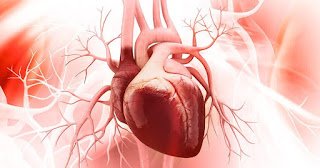Congenital heart disease is one or more problems with the heart's structure that exist since birth. Congenital means that you're born with the defect. Congenital heart disease, also called congenital heart defects, can change the way blood flows through your heart. Some congenital heart defects might not cause any problems. Complex defects, however, can cause life-threatening complications.
Advances in diagnosis and treatment have allowed babies with congenital heart disease to survive well into adulthood. Sometimes, signs and symptoms of congenital heart disease aren't seen until you're an adult.
If you have congenital heart disease you likely will need care throughout your life. Check with your doctor to determine how often you need a checkup.
# ## Symptoms
Some congenital heart defects cause no signs or symptoms. For some people, signs or symptoms occur later in life. And symptoms can return years after you've had treatment for a heart defect.
Common congenital heart disease symptoms in adults include:
Abnormal heart rhythms (arrhythmias)
A bluish tint to the skin, lips, and fingernails (cyanosis)
Shortness of breath
Tiring quickly upon exertion
Swelling of body tissue or organs (edema).
## When to see a doctor
If you're having worrisome symptoms, such as chest pain or shortness of breath, seek emergency medical attention.
If you have signs or symptoms of congenital heart disease or were treated for a congenital heart defect as a child, make an appointment to see your doctor.
## Causes
Researchers aren't sure what causes most types of congenital heart disease. Some congenital heart diseases are passed down through families (inherited).
Understanding congenital heart disease helps to know how the heart works.
The heart is divided into chambers — two upper chambers (atria) and two lower chambers (ventricles).
The right side of the heart moves blood to the lungs through blood vessels (pulmonary arteries).
In the lungs, the blood picks up oxygen and then returns to the left side of your heart through the pulmonary veins.
The left side of the heart then pumps the blood through the aorta and out to the rest of the body.
Congenital heart disease can affect any of these heart structures, including the arteries, valves, chambers, and the wall of tissue that separates the chambers (septum).
Congenital heart disease in adults
